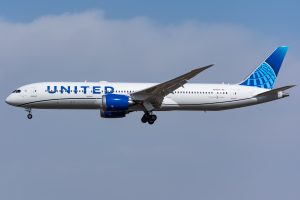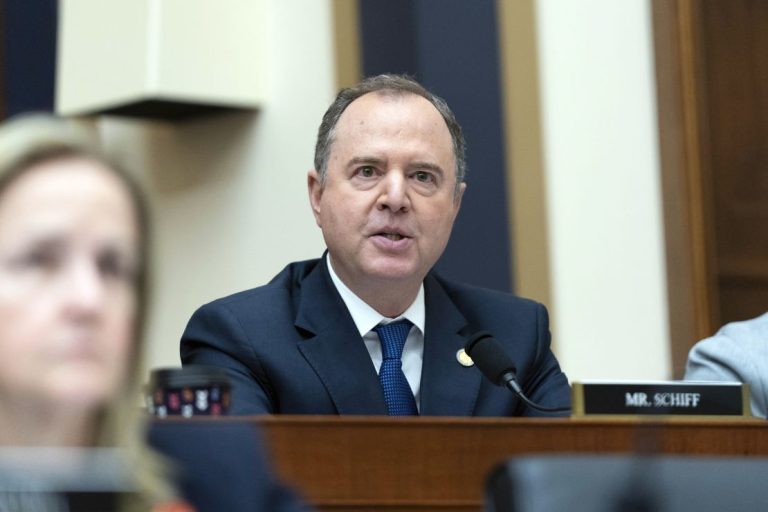A collision between two United Airlines aircraft on the tarmac at Houston’s George Bush Intercontinental Airport on November 18 has prompted significant flight delays but, fortunately, resulted in no injuries. The incident involved two Boeing 737-900 planes and has drawn attention due to the growing frequency of ground-related aviation mishaps in the United States.
According to United Airlines, Flight 544, which was bound for Cleveland-Hopkins International Airport carrying 101 passengers and six crew members, made contact with the wing of Flight 2451 as the latter was preparing to taxi. Flight 2451, en route to Orlando International Airport with 73 passengers and six crew members, had just pushed back from the gate when the collision occurred.
A spokesperson for United Airlines described the incident, stating that Flight 544 was preparing to taxi when it made contact with Flight 2451, which had stopped after pushing back. Both planes returned to the gate safely, and passengers deplaned without incident. The airline promptly arranged alternative aircraft to transport travelers to their destinations, mitigating further disruption.
Flight schedules were affected, with delays exceeding two hours for both flights. Flight 2451 had been scheduled to depart at 6:21 p.m., while Flight 544 was scheduled just minutes earlier. Despite the delays, both flights eventually reached their respective destinations.
This event is the latest in a series of ground and flight-related aviation incidents in recent months. In late October, a JetBlue Airbus A320 encountered a flight control malfunction while traveling from Cancun to Newark, forcing an emergency diversion to Tampa International Airport. Several passengers sustained injuries during an abrupt altitude drop, highlighting the risks of mechanical malfunctions even after the aircraft has departed.
Similarly, in September, an American Airlines flight at Los Angeles International Airport had to abort its takeoff after an AeroLogic aircraft crossed an active runway without authorization. The FAA confirmed that controllers immediately halted the American crew’s takeoff, preventing a potential collision. The two planes never came closer than 5,200 feet.
In another recent incident, a United Airlines flight collided with a stationary plane at Chicago’s O’Hare International Airport while approaching its gate. Flight 2652, arriving from Jackson Hole, Wyoming, with 113 passengers, clipped the horizontal stabilizer of the stationary aircraft. Passengers were delayed by 40 minutes, but no injuries occurred. One passenger, Bill Marcus, described the event: “I was shocked that I didn’t feel something more, although when they separated the planes there was some shuddering. I didn’t realize anything had happened until the delay was announced.”
Other notable aviation incidents in 2025 include an American Airlines flight from Philadelphia to Phoenix making an unscheduled landing at Washington Dulles International Airport after a passenger’s electronic device caught fire. United Airlines also faced an emergency in July when a Boeing 787 en route to Munich experienced a left engine malfunction shortly after takeoff from Washington Dulles, prompting multiple “mayday” calls.
While aviation accidents continue to make headlines, data from the National Transportation Safety Board indicates a global downward trend in fatal airline incidents. In 2025, there have been 239 fatal plane crashes and 1,023 non-fatal crashes worldwide, reflecting improvements in safety protocols and aircraft technology. Nevertheless, ground collisions such as the one in Houston illustrate that operational risks remain, particularly during taxiing and pushback procedures.
Experts note that ground collisions can occur for several reasons, including miscommunication between pilots and ground control, equipment malfunctions, or human error during taxiing. The FAA emphasizes strict adherence to safety procedures, clear communication protocols, and situational awareness as critical measures to prevent such incidents.
In response to the Houston collision, United Airlines confirmed that both aircraft would undergo thorough inspections before returning to service. The airline also reaffirmed its commitment to passenger safety, citing ongoing investments in staff training, airport coordination, and technology upgrades designed to prevent similar events.
This incident adds to a broader conversation about aviation safety, particularly in busy airports with high traffic volumes like Houston. George Bush Intercontinental Airport is a major hub for domestic and international flights, making efficient ground operations and risk management crucial to maintaining safety standards.
Passenger reactions to the incident varied. Many expressed relief that there were no injuries, while others voiced concern over recurring mishaps involving major carriers. Aviation analysts stress that while fatalities remain low compared to historical trends, even minor collisions can have significant operational and financial impacts, including flight delays, aircraft inspections, and passenger compensation.
United Airlines has a strong track record of quickly responding to emergencies. In this case, both flights returned to the gate without injury, demonstrating the effectiveness of established safety protocols. Aviation authorities continue to monitor ground operations closely, particularly at congested airports, to ensure that lessons from incidents like this inform ongoing safety improvements.
The Houston collision serves as a reminder that even routine operations like taxiing carry inherent risks. Experts recommend continued investment in training, real-time monitoring, and technological support systems to prevent similar incidents. As the aviation industry grows and airports become busier, adherence to safety procedures remains paramount to protecting passengers, crew, and aircraft.
Overall, while the collision caused inconvenience for passengers and temporary disruption to flight schedules, the absence of injuries highlights the success of emergency procedures and safety protocols. Airlines and regulators alike continue to work together to minimize risks, prevent accidents, and maintain confidence in air travel.

Emily Johnson is a critically acclaimed essayist and novelist known for her thought-provoking works centered on feminism, women’s rights, and modern relationships. Born and raised in Portland, Oregon, Emily grew up with a deep love of books, often spending her afternoons at her local library. She went on to study literature and gender studies at UCLA, where she became deeply involved in activism and began publishing essays in campus journals. Her debut essay collection, Voices Unbound, struck a chord with readers nationwide for its fearless exploration of gender dynamics, identity, and the challenges faced by women in contemporary society. Emily later transitioned into fiction, writing novels that balance compelling storytelling with social commentary. Her protagonists are often strong, multidimensional women navigating love, ambition, and the struggles of everyday life, making her a favorite among readers who crave authentic, relatable narratives. Critics praise her ability to merge personal intimacy with universal themes. Off the page, Emily is an advocate for women in publishing, leading workshops that encourage young female writers to embrace their voices. She lives in Seattle with her partner and two rescue cats, where she continues to write, teach, and inspire a new generation of storytellers.








